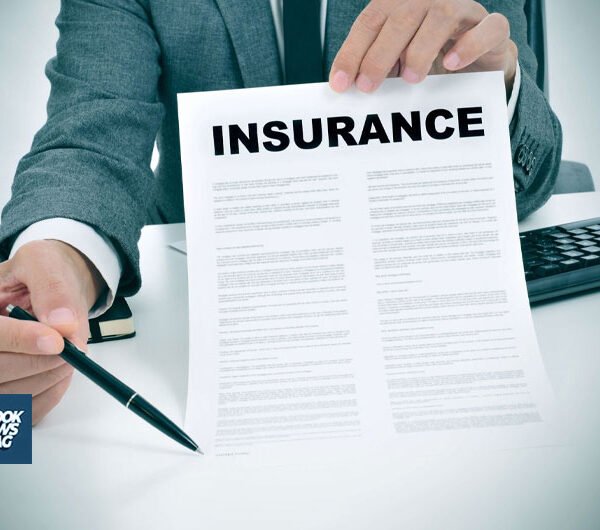The Complex World of Crash-Avoidance Feature Repairs
Vehicle safety has come a long way. Technologies that alert drivers to potential collisions and even automatically apply brakes promise huge declines in accidents, injuries and deaths. But there is a catch. These sophisticated systems, packed with cameras, radar and computers can be tricky to repair. Consumer experiences spotlight some ongoing challenges.
This article will provide an overview of the development and benefits of crash-avoidance technologies in modern vehicles. However, the focus will be on the complications that can arise when repairing these complex features after a collision and how this can impact safety and consumer satisfaction. The goal is to highlight this important issue in order to help shape ongoing improvements in both crash-avoidance technologies and repair procedures.
The Evolution of Crash-Avoidance Features
Crash-avoidance features utilize a network of sensors, cameras, radar and computers to help drivers prevent or reduce the severity of accidents. Development of the underlying technologies dates back to the 1950s, but availability in production vehicles is relatively recent.
Historical Context
Research into using radar to detect obstacles began in the 1950s. Cruise control in the 1970s marked early adoption of automation. Anti-lock brakes followed in the 1980s. Traction control emerged in 1987 along with the first collision warning system.
The 1990s saw further innovations like electronic stability control. Automakers began offering advanced driver assists in luxury models in the early 2000s. These included adaptive cruise control, automatic braking and lane departure warning. Crash imminent braking and pedestrian detection joined in later years.
Modern Systems
Today’s vehicles integrate some or all of these crash-avoidance capabilities:
- Forward collision warning: alerts driver to slowing or stopped traffic
- Automatic emergency braking: detects impending collision and applies brakes
- Lane departure warning: alerts when crossing lane markers
- Blind spot detection: identifies vehicles in hard-to-see areas
- Rear cross traffic alert: warns of traffic when backing up
- Adaptive cruise control: automatically adjusts speed to maintain distance from other vehicles
- Pedestrian detection: identifies and alerts driver to pedestrians
Benefits of Crash-Avoidance Features
Widespread adoption of advanced crash-avoidance features aims to reduce accident fatalities and costs. Available data confirms their life-saving potential.
Accident and Fatality Reduction
The National Highway Traffic Safety Administration estimates forward collision warning and automatic emergency braking could prevent 139,000 police-reported crashes and 879 deaths each year. For rear cross traffic alert, estimates show prevention of 15,000 injury crashes and 35 deaths annually.
Improved Safety
By alerting drivers to hazards and engaging brakes automatically, crash-avoidance technologies provide an extra margin of safety that compensates for distracted driving. Their adoption across more vehicle makes could significantly improve road safety for all drivers.
Potential Insurance Savings
Reduced accidents translate into lower damages and injury claims. A 2015 IIHS study found automatic braking could lower insurer costs by $1.1 billion. Consumer data shows crash-avoidance features generate savings on insurance premiums.
Challenges in Crash-Avoidance Repairs
Sophisticated sensors and calibration requirements make fixing crash-avoidance technologies complicated. Vehicle owners report post-repair problems. Difficulties can lead drivers to disable important safety features.
Complex and Expensive
Radar, cameras and supporting computers link together to enable crash avoidance. Proper mounting, positioning and calibration is crucial but complex. Complete repairs can exceed $1,000. Openings for improper workmanship exist.
Sensor and Camera Calibration
Precision calibration establishes alignment between sensors, cameras and onboard computers. This tuning allows proper functioning of alerts and automatic braking. Failure to correctly calibrate during repairs frequently creates issues.
Reported Post-Repair Problems
Many owners report loss of functionality, false alerts and unexpected braking after repairs. 17% of respondents in one IIHS survey required a second visit to address issues missed in initial repairs.
False Alerts and Braking
Cameras fall out of calibration easily leading to problems distinguishing stationary objects like bridges. Errant radar operation also triggers false collision warnings and emergency braking.
Functionality Loss
Failed calibration or overlooked damage can disable crash avoidance operation. Warning alerts and automatic braking become non-functional. This safety loss usually proves temporary but creates hazards.
Difficult Repairs and Disabled Features
Repair challenges compound owner frustration over post-repair problems. Some report dealership advice to simply disable malfunctioning crash-avoidance capabilities due to difficulty pinpointing underlying issues.
Troubleshooting Difficulties
Proper diagnosis requires specialized tools, training and information not always available to independent shops. Complex interactions between components complicates troubleshooting.
Willful Disablement
Facing repeat repairs and ongoing issues, some owners opt to disable alert and automatic brake functions. This eliminates intended safety benefits from these technologies when operating properly.
Consumer Experiences with Repairs
Surveys detail that complications negatively impact owner satisfaction with crash-avoidance repairs. Experts emphasize the importance of tracking these experiences to inform future improvements.
IIHS Repair Survey Results
A 2022 Insurance Institute for Highway Safety survey on crash-avoidance repairs highlights consumer frustrations. Over 3,000 owners provided insights on expenses and problems encountered.
Owner-Reported Repair Problems
17% indicated repairs failed to fully restore functionality. Cameras and sensors needed further adjustment or recalibration in 13% of cases. Owner satisfaction averaged just 6.6 out of 10.
Out-of-Pocket Cost Concerns
Since crash-avoidance features fall outside bumper-to-bumper warranty terms, owners pay around $500 on average for repairs. One-third reported higher than expected expenses. Deductibles and rate hikes compound frustrations.
Importance of Tracking Repair Issues
Repair professionals emphasize that capturing consumer repair experiences creates vital data trails. Monitoring key measures over time provides insights on where persistent problems originate and how best to address them.
Repair Problem Monitoring
Tracking repair problems reported by owners helps researchers identify parts and procedures most prone to complications. This data guides strategies to improve repair processes.
Consumer Feedback Loops
Analyzing owner ratings of expenses and functionality after repairs closes the feedback loop. This supports refinements to claims procedures and shop training to boost satisfaction.
The Future of Crash-Avoidance Features and Repairs
While complications exist, the life-saving potential of ever advancing crash-avoidance systems cannot be denied. Solutions to refine repair procedures and address consumer frustrations can ensure improved adoption and safety.
Ongoing Technology Innovation
Development continues to enhance reliability and capabilities. For example, wider fields of view will enable next generation cameras to better detect pedestrians and cyclists. More powerful onboard computers will sharpen collision warnings and braking.
Potential Repair Solutions
Repair trade groups emphasize proper training combined with rigorous adherence to prescribed calibration processes during repairs. Wider availability of proprietary repair data aids shops in properly restoring complex systems.
The Role of Consumer Feedback
Constructive owner ratings of repair expenses, problems encountered and functionality restoration provide crucial guidance. Direct consumer input will play a key role in driving procedural improvements.
Conclusion
Advanced crash-avoidance features clearly improve driver safety when operational. But complicated repairs can disable these advantages. Tracking and addressing repair challenges through refreshed procedures and training will help maximize lifesaving benefits. Consumer experiences spotlight the importance of striking the right balance between sophisticated automation and serviceability.








